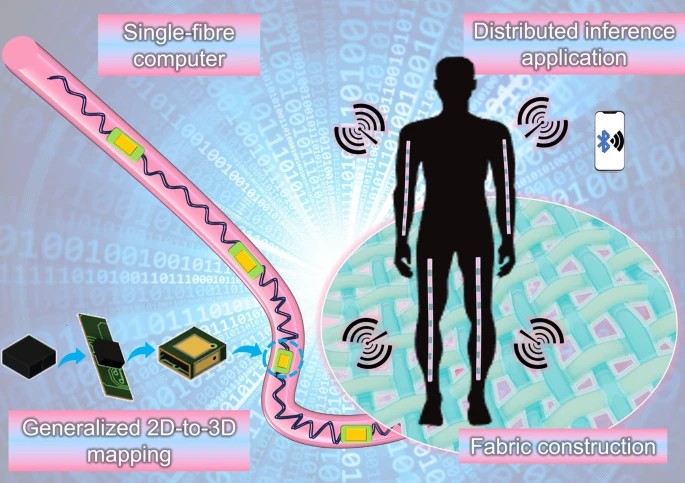
Scientists have assembled the key elements of a computing system into a single, flexible, and even machine-washable thread. The idea is to weave many of these threads into fabric to create “fiber computers”: clothing equipped with intelligence and integrated sensors.
This is the next step for smart textiles, or e-textiles: materials with electronic components that extend the capabilities of wearable devices and enable the creation of, for example, interactive textiles and displays. The first examples were LilyPad in 2007: sewn modules for clothing, toys, and interactive art objects. But most solutions have long had a common problem: The wires themselves could do almost nothing and contained no individual components, making it difficult to read biological signals and process data in real time.

In them new work, researchers have wrappedsensors, communications, processing and memory into a single elastic thread. Each thread stretches 60% and is machine washable, making it suitable for everyday use. Each fiber contains eight devices: four sensors (a photodiode, a temperature sensor, an accelerometer, and a PPG sensor that measures changes in skin light absorption and is suitable for heart rate monitoring), as well as a microcontroller, two communications modules, and a power management unit. Together, this enables data collection, processing, and storage, as well as the transmission of results.
To test the system in practice, four “smart threads” were sewn into a sleeve and a pant leg, and a volunteer was asked to perform a series of free-body exercises: squats, lunges, planks, and arm rotations. Each thread activated its own trained neural network, recognizing movements in real time. A single fiber correctly identified the type of action 67% of the time, and by working together with four threads, accuracy increased to 95%.
The authors emphasize that such an advance demonstrates the power of cooperative “multi-node” sensing and distributed processing: the local computations on each fiber are integrated by a network solution, making the system more reliable and accurate.
The researchers admit that there are still challenges to overcome before large-scale application: accelerating data exchange between threads, reducing energy consumption, and expanding available bandwidth. They see the next steps in developing faster, lower-latency communication protocols specifically designed for “fiber-optic computers.” If this is successful, clothing will truly be able to not only “sense” a person, but also understand their movements in real time, without compromising the practicality and normal care of the items.
Follow us on Google News to receive daily updates on cybersecurity. Contact us if you would like to report news, insights or content for publication.
